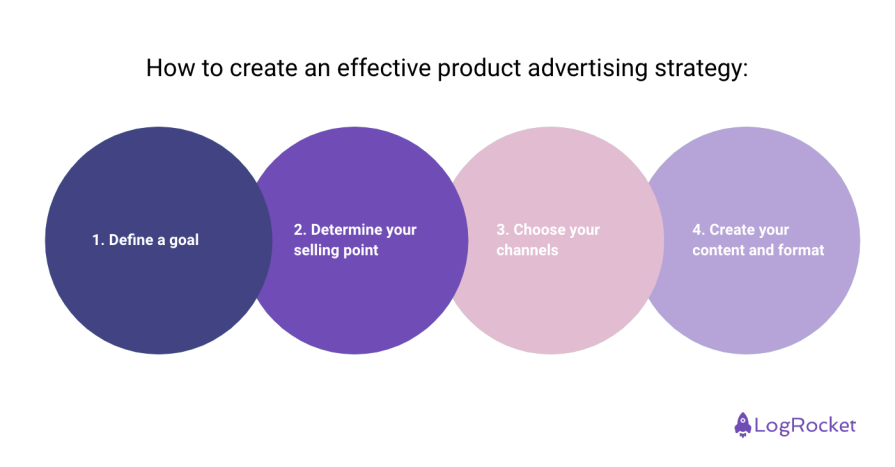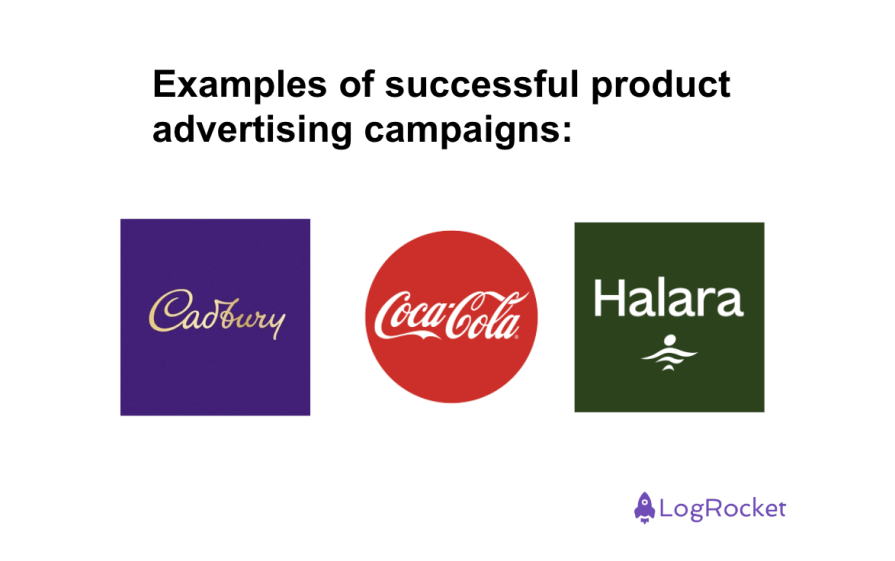Imagine you’re at home watching TV or perhaps mindlessly scrolling your Instagram feed and an ad pops up highlighting a new “trending” product. You stop mid scroll and pause, intrigued by the ad for this new product. Immediately, your brain starts thinking, “maybe I need one of these!”

Your curiosity starts to set in, you click the ad to learn more about the product, and read the reviews before deciding to purchase it. Without knowing it, you just clicked on a product advertisement.
This article serves as a guide to product advertising, including the different types, how to create an effective ad, and examples of successful campaigns.
Product advertising involves you marketing a product or set of products instead of marketing the brand itself. Both types of marketing, while valid, have their pros and cons. Deciding whether to market a product or the brand itself depends on how much exposure the brand has had, how well known the brand is, and other business drivers like companies wanting to push a new product line.
How many times have you seen a particular product and purchased it without knowing anything about that brand? If you’re an avid Amazon shopper like myself, probably pretty often!
Marketing specific product instead of the brand allows you to:
So what qualifies as “effective” product advertising? Before you get started, you need to know your target audience (market/demographic) and where they spend their time (reach). Some of the newest (and oldest) methods include:
Print advertising has been around since the late 1800s. Despite its age, print advertising works really well for certain demographics like new home or pet owners. Print advertising often includes discounts that incentivize customers to buy the product.
Print advertising might use:
Digital dates back to the early 1940s when advertisements began to appear on TV. Since then, digital marketing has expanded to include:
So what makes an effective product advertisement? You need to know who to target and why. Are you trying to grow your market and target a new area? Use these steps to help you get started:

Before you start, you need a goal. What do you want to achieve from advertising? Be as specific as possible whether it means an X percent increase in sales, revenue, or a more abstract metric like increased exposure.
To determine your angle for the ad ask yourself the following questions: What makes this product unique or stand out from similar products? Why does someone need your product? Who is this product for? This helps you figure out how to position it and what unique features to highlight.
Now you need to locate your audience to determine how and when to target them.
Once you know your demographic choose the channels you want to double down to target them. Customer research plays a huge role here. You want to avoid advertising a product for teens in a print magazine and showcasing a product for the elderly on an Instagram ad.
Also, consider frequency, like how long to run the ad or how many emails or push messages to send regarding this product.
Once you can answer the who, what, when and where it’s time for the how. If you have access to a designer to create your content, leverage their knowledge to create your ad. Will you use video or a gif? Will your ad highlight customer reviews?
Do your research to figure out what format for your content makes sense. You need to resonate with your audience to see results that drive sales.
The following examples illustrate successful applications of product advertising campaigns. In each, try to think about how you can apply learnings to your own context:

Halara is a Hong Kong based brand that markets comfortable, cost effective active-wear clothes for women. It makes a similar product to Lululemon but at a UNIQLO price point. It’s well known for its “exercise dress” that first debuted in 2018.
Halara did its research and understood its target audience as women ages 25-45 looking for comfortable, affordable everyday clothes with style. It also knew that the primary channel to reach its market was social and specifically influencer marketing.
Halara doubled down on marketing with women by having people show their love of this super convenient exercise dress, a comfortable, tennis-like dress that looks cute, has pockets and comes in a plethora of colors. In fact, post pandemic in 2021 the dress went viral. The #exercisedress hashtag had over 2.3 million views, featuring thousands of women wearing the dress, offering dress comparisons, and giving their reviews of the product!
Coca-Cola’s “Share a Coke” campaign shows the power of effective product advertising. It rolled out the global campaign in 2012 through 2014. For it, Coca-cola printed 250 of the most popular first names on its labels, along with a few common phrases like “BFF” and “Legend.”
The concept was meant to hook its buyers by bringing to mind something familiar or personal. And guess what? It worked! This campaign was so successful that the company saw an 11 percent increase in sales when launching the campaign in the US!
Cadbury launched an incredibly successful product advertising campaign with its Worldwide Hide Event. The brand makes egg shaped chocolate usually associated with Easter. Cadbury partnered with Google Maps to create “virtual easter eggs” that maps users could hide and seek. Ingenious!
This campaign connected people all around the world in a virtual easter egg hunt. By using creativity and leveraging its audience it created an experience centered around a piece of chocolate. It even found ways to monetize the experience itself with a “paid” version.
Despite the benefits of product advertising, it requires significant investment. Because of this, you need to have quantifiable measures of success to demonstrate value to stakeholders and make corrections as needed. You might want to consider the following:
Also, take note of any negative metrics like:
Going forward, companies will continue to invest in product advertising. Some of the biggest treads include:
As you can see, a TON of planning goes into determining the best approach for marketing a given product. Remember to always run extensive research and evaluate your options before deciding on a strategy that could determine the success of your product. Strive to make ads as personal as possible and keep the customer front of mind.
Good luck and comment with any questions!
Featured image source: IconScout

LogRocket identifies friction points in the user experience so you can make informed decisions about product and design changes that must happen to hit your goals.
With LogRocket, you can understand the scope of the issues affecting your product and prioritize the changes that need to be made. LogRocket simplifies workflows by allowing Engineering, Product, UX, and Design teams to work from the same data as you, eliminating any confusion about what needs to be done.
Get your teams on the same page — try LogRocket today.

A practical framework for PMs to use AI in ideation without sacrificing judgment, strategy, or decision quality.

A practical five minute revenue estimation method to help product managers compare ideas, drop low impact features, and prioritize smarter.

A practical guide for PMs who want to stop being bottlenecks, delegate smarter, and lead teams effectively with a clear ownership framework.

Stop letting unreliable data block features. Treat data as inventory to track quality, ownership, and ship with confidence.